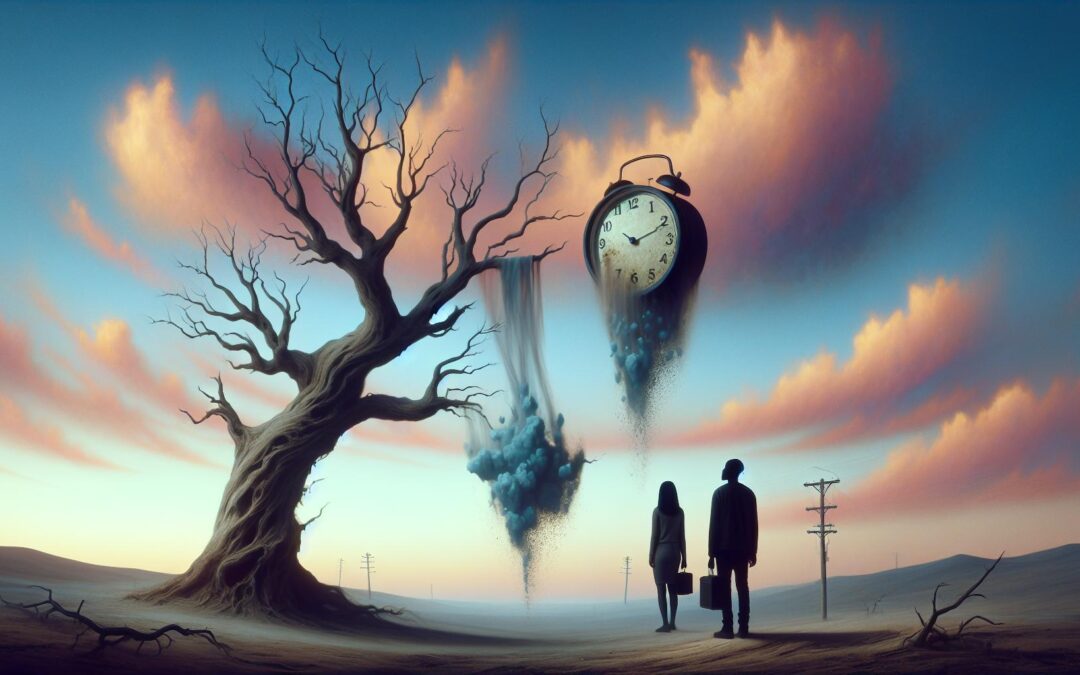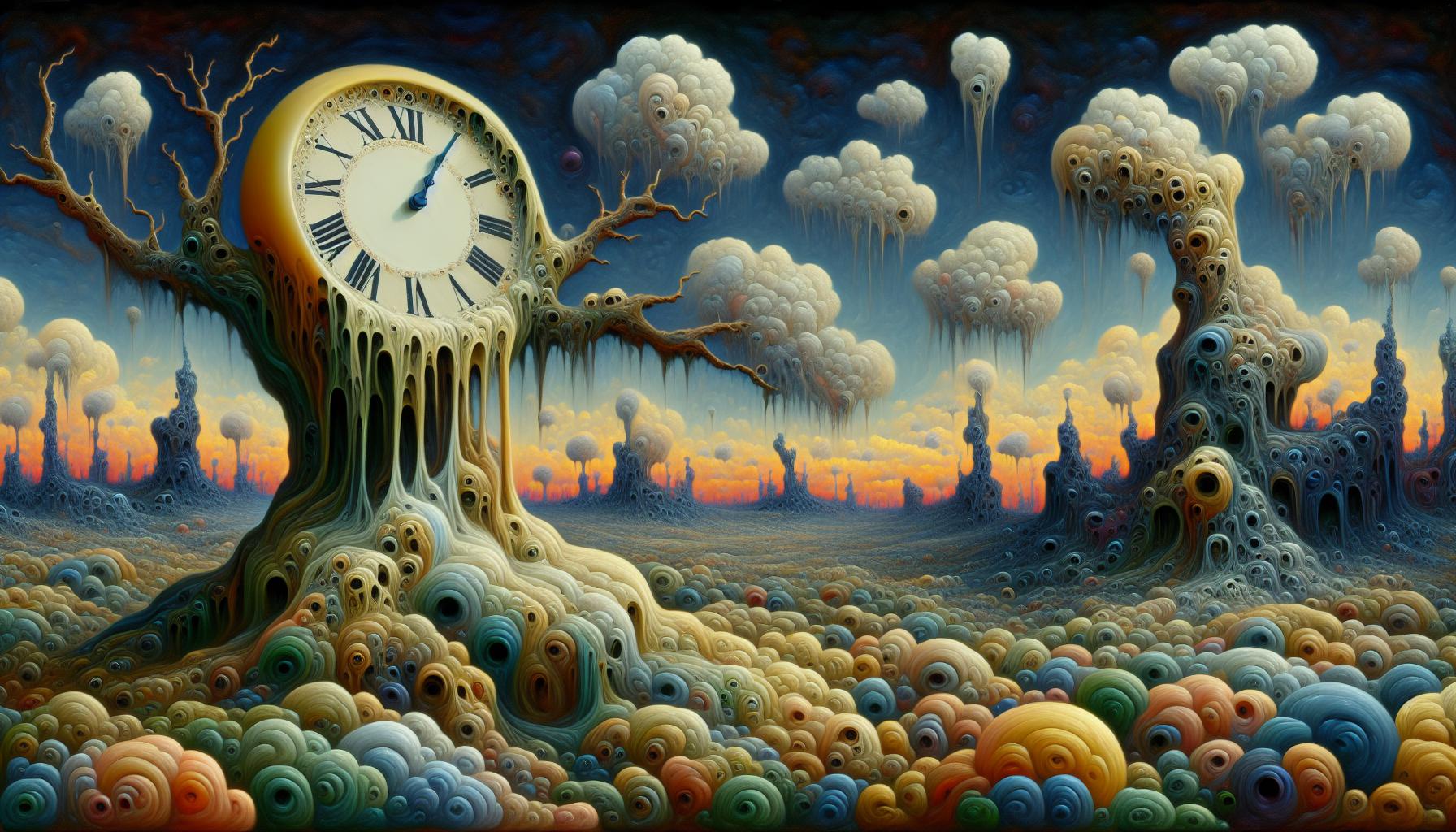Surrealist art transports viewers into a realm where reality bends and imagination reigns. It challenges the ordinary by blending dream-like elements with the familiar, creating a striking juxtaposition that captivates the mind. Artists like Salvador Dalí and René Magritte masterfully craft scenes that mimic the world yet distort it in unexpected ways, prompting introspection and wonder. This unique art movement emerged in the early 20th century, fueled by a desire to explore the unconscious and the irrational. Surrealism goes beyond mere imitation; it invites audiences to question their perceptions and embrace the bizarre. By delving into the depths of dreams and fantasies, surrealist works unveil hidden truths about human experience, making them timeless treasures that continue to inspire and provoke thought today.
Surrealist Art Works to Imitate the World of
Surrealist art immerses viewers in a realm where reality transforms into a dreamlike state. This movement prioritizes imagination over the rational world, facilitating a unique exploration of the human psyche. Artists such as Salvador Dalí and René Magritte masterfully combine fantastical imagery with familiar symbols, creating striking scenes that provoke deep contemplation. Surrealism originated in the early 20th century, driven by a desire to delve into the unconscious mind. It arose as a response to traditional artistic conventions, embracing the bizarre and the irrational. By portraying unexpected juxtapositions and distorted perspectives, surrealists challenge viewers to reconsider their understanding of reality. Themes in surrealist works frequently include dream interpretation, free association, and the significance of the unconscious. These themes invite audiences to explore deeper meanings and hidden truths about their own experiences. Surrealism serves as both an artistic movement and an enduring source of inspiration, encouraging reflection on the complexities of human existence.
Influential Artists in Surrealism
Surrealism features several influential artists whose works exemplify the movement’s exploration of the unconscious and distorted reality. Key figures include Salvador Dalí, René Magritte, and Max Ernst, each contributing uniquely to the genre.
Salvador Dalí
Salvador Dalí is one of the most iconic figures in surrealism, known for his striking and bizarre imagery. His painting “The Persistence of Memory” features melting clocks draped over various objects, symbolizing the fluidity of time and reality. Dalí’s technique blends meticulous realism with dream-like elements, encouraging viewers to confront their subconscious desires and fears. His work often includes autobiographical references, making experiences and memories central themes.
René Magritte
René Magritte’s surrealist art challenges perceptions of reality through clever visual contradictions and juxtaposition. His famous piece “The Treachery of Images,” which depicts a pipe beneath the caption “Ceci n’est pas une pipe” (This is not a pipe), emphasizes the distinction between representation and reality. Magritte’s works frequently contain ordinary objects placed in extraordinary contexts, provoking thought about the meaning and significance behind them. His ability to blend the familiar with the strange invites viewers to question their own interpretations.
Max Ernst
Max Ernst played a vital role in the development of surrealist techniques and aesthetics. He pioneered methods such as frottage and grattage, which involve creating textures through rubbing and scraping processes. His artwork often features fantastical landscapes and dream-like figures, as seen in “The Elephant Celebes.” Ernst’s imaginative approach allows for complex narratives that engage with themes of mythology and the unconscious mind. His innovative use of materials and techniques set a foundation for future generations of surrealists.
Key Themes in Surrealist Art Works
Surrealist art often explores complex themes that challenge reality perception and delve into the human psyche. These themes reflect the influence of dreams and the subconscious, as well as the interplay between reality and illusion.
Dream and Subconscious
Dreams serve as a vital component of surrealist art, providing a window into the subconscious mind. Artists frequently incorporate dream-like imagery to represent thoughts and emotions that emerge during sleep. This exploration allows for the expression of hidden fears, desires, and traumas, encouraging viewers to reflect on their own subconscious experiences. Techniques like automatism and free association facilitate the creation of works that evoke surreal dreamscapes, such as Dalí’s “The Elephants,” where exaggerated forms challenge conventional logic. Through these artworks, surrealists strive to unveil the complexities of human consciousness.
Reality and Illusion
Surrealist artists blur the lines between reality and illusion, prompting audiences to question their perceptions. They utilize visual paradoxes and juxtapositions to create scenes that defy logic, as seen in Magritte’s “The False Mirror.” This painting features an eye that replaces the viewer’s reality with an imaginative landscape, illustrating the disconnection between what is seen and what exists. Surrealism’s emphasis on illusion encourages a re-examination of the nature of reality itself, pushing the boundaries of how individuals interpret the world around them. The contrast between the familiar and the bizarre fosters a deeper understanding of existence, challenging viewers to reconsider their beliefs and assumptions.
Techniques Used in Surrealist Art Works
Surrealist artists utilize various techniques to create imaginative works that challenge reality. These methods encourage viewers to explore the unconscious, revealing deeper emotional and psychological layers.
Juxtaposition
Juxtaposition involves contrasting disparate elements within a single composition. This technique highlights the irrational and challenges conventional logic, prompting viewers to seek new interpretations. For example, Salvador Dalí’s “The Elephants” showcases elongated creatures balancing on slender legs, merging the real with the nonsensical. René Magritte often employs juxtaposition to create visual paradoxes, as seen in “The Son of Man,” where a man’s face obscured by an apple invites viewers to question identity and perception. By placing contrasting images together, surrealists craft striking visual experiences that provoke thought and introspection.
Automatism
Automatism focuses on unleashing the subconscious through spontaneous and unfiltered creation. This method involves allowing the hand to move freely across the canvas without conscious control, resulting in unexpected forms and shapes. Artists like André Masson employed this technique to produce chaotic yet expressive works that embody emotional turbulence. The aim is to bypass rational thought and tap into primal instincts, revealing the underlying truths of human experience. Automatism encourages viewers to engage with the artwork on a visceral level, exploring the dynamics of their own subconscious reactions.
Impact of Surrealism on Contemporary Art
Surrealism significantly influences contemporary art, evident in various artistic expressions and movements. Surrealism’s emphasis on the unconscious inspired many modern artists to explore psychological themes. Artists like Jeff Koons and Yayoi Kusama incorporate surrealistic elements to challenge traditional perceptions of art and reality. Surrealism’s use of symbolism shapes contemporary art practices. Symbolic representations, such as those found in the works of Takashi Murakami, continue to convey deeper meanings and provoke thought. Murakami’s “Flower Sun and Rain” encapsulates the surreal playfulness that engages audiences while inviting them to explore complex ideas. Contemporary art often features an integration of surrealist techniques and styles. Techniques like collage and mixed media, pioneered by surrealists, remain prevalent in works by contemporary artists such as Kara Walker and Michael Asher. Their ability to juxtapose disparate images and ideas retains the surrealistic essence, encouraging viewers to rethink their understanding of reality. Surrealist themes resonate in contemporary installations and performance art. Artists like Marina Abramović employ dreamlike scenarios to challenge viewers’ perceptions and evoke intense emotional responses. This connection to the subconscious remains a powerful aspect of artistic expression. Surrealism’s legacy is evident in the proliferation of visual paradoxes in modern art. Artists today manipulate scale and context to create incongruous compositions, echoing the surrealist practice of altering reality. Works by artists like Olafur Eliasson exemplify this approach, merging nature and technology to create immersive experiences that question reality. Surrealistic ideas continue to permeate digital art and new media. With virtual realities and augmented experiences, contemporary artists like Refik Anadol explore the boundaries of perception. Their works elicit surreal interactions, allowing audiences to engage in worlds that blur the lines between digital and physical. Surrealism plays a vital role in shaping discussions around cultural narratives and identity. Contemporary artists often draw from surrealist inspirations to critique societal norms and explore personal and collective identities. This influence fosters an ongoing dialogue about the human experience and its complexities in modern society. Surrealist art remains a powerful lens through which to explore the complexities of human existence. By challenging perceptions and embracing the bizarre, these works encourage deeper introspection and emotional engagement. The techniques and themes pioneered by surrealist artists continue to resonate in contemporary practices, inspiring new generations to question reality and delve into the subconscious. As the dialogue around identity and cultural narratives evolves, surrealism’s influence endures, reminding audiences of the beauty found in the unexpected and the profound insights that lie within the world of dreams.


